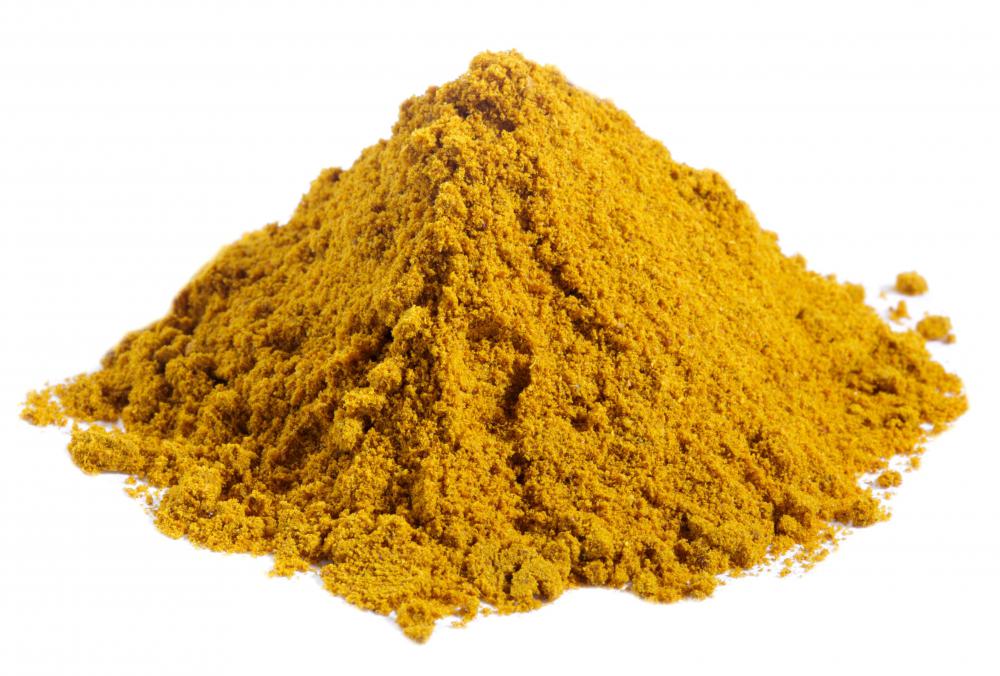At WiseGEEK, we're committed to delivering accurate, trustworthy information. Our expert-authored content is rigorously fact-checked and sourced from credible authorities. Discover how we uphold the highest standards in providing you with reliable knowledge.
What Is Japanese Curry?
Japanese curry is roux based and is associated with Japan. Called karē, people eat this popular curry in restaurants and commonly prepare it at home. Its origins are credited to the British Navy, who introduced curry during the Meji period, when India was under British rule. Although the curry that was originally introduced had a strong Indian influence, Japanese curry in its current form is very different. Many areas of Japan now have their own unique regional curries.
Karē has a very thick, smooth-textured gravy that is sweeter and less spicy than its Indian counterparts. Like Indian curry, however, cooks prepare it using meat, vegetables, and spices. Although a wide variety of vegetables can be used in Japanese curry, the most common include potatoes, onions, and carrots. Kabocha and daikon are also popular choices. The meat is usually beef, pork, chicken, or prawn.

The Japanese style of curry differs from any other curry in the making of the gravy. Although the gravy can be made from scratch, in Japan, cooks prepare it most often using a premade curry roux. This roux is readily found in Japanese supermarkets and comes in the form of solid bars, powder, and bags, which people boil before adding them. In North America, Japanese curry roux is most commonly found in bar form. Curry roux comes in hot, medium, and mild.

A Japanese curry roux contains a base of vegetable oil, wheat flour, or cornstarch with salt and sugar. The curry spices include turmeric, coriander, and cumin. Additional seasonings can include onion powder, milk powder, or honey, among others. Yeast extract is also a common ingredient.
To make a Japanese curry, cooks chop onions and stir-fry them briefly in the pan before adding the meat, garlic, carrot, and potato. They cook the ingredients until the meat is browned all over and then add water. After being brought to a boil, it simmers over a medium-low heat until the meat is cooked through and tender; it takes approximately 10 to 20 minutes. When the pan comes off the heat, cooks add the curry roux and stir it in. If the curry roux is solid, cooks break it into several smaller pieces and stir it into the pot until it completely melts.
The curry is then covered and left for approximately 10 minutes to allow the roux to thicken before serving. It is most commonly served over rice and accompanied by fukujinzuke, a specially designated, crunchy Japanese pickle made from daikon, cucumber, and soy sauce, and other ingredients. This type of curry is also served over noodles, in soups, and in steamed buns.
AS FEATURED ON:
AS FEATURED ON:












Discussion Comments
There are so many ways to use Japanese curry. The other day, I used it as gravy on top of fried chicken and a side of rice. I've also cooked it with noodles before. It's always good!
@bluedolphin-- Japanese curry is milder but I think that's a good thing. I personally cannot handle very spicy curries. Japanese curry is just right and it's so convenient. I just have to add the roux to water for curry sauce. It cuts down preparation and cooking time, so it's great for those who don't have a lot of time on their hands to cook.
Japanese curry can be made from scratch too. I think many Japanese women do make it from scratch. I use Japanese curry for convenience and ease, so I have never thought of making it from scratch. It might be a good option for you though. You could adjust the spices according to your palate.
I ran out of curry at home and picked up a packet of Japanese curry bars at the grocery store on a whim. I made a chicken and potato curry with it. To my surprise, the curry turned out much different than Indian curry paste. It really looks like gravy as the article said, it's thick and a very dark brown color. I bought the spicy variety, so it was spicy but not as complex as Indian curry mix. I tasted fewer and different spices.
Post your comments